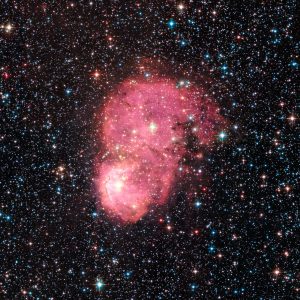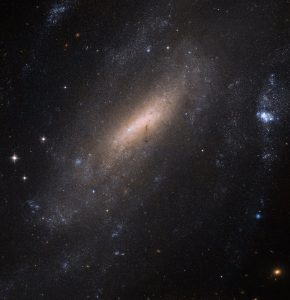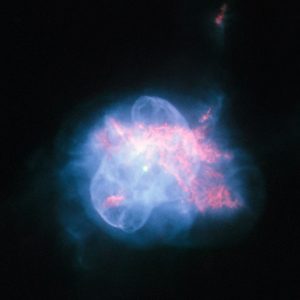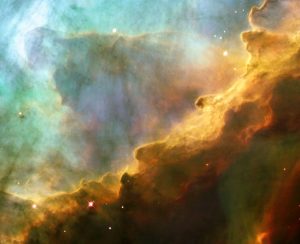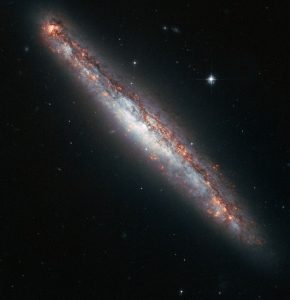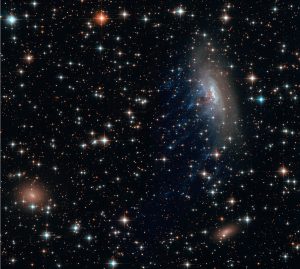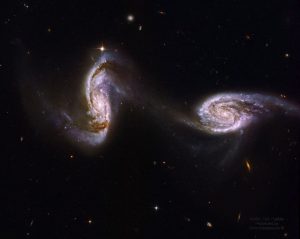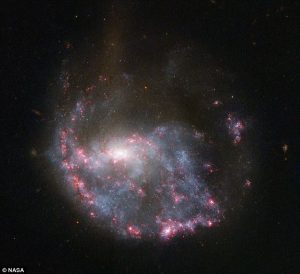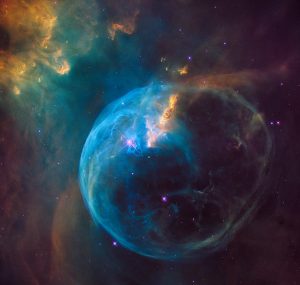telescopio Hubble
Luminarie accese nella Piccola Nube
Questa sfavillante nebulosa di un bel rosa intenso, immortalata con grande dettaglio dal telescopio Hubble e chiamata NGC 248, si trova nella Piccola Nube di Magellano, a circa 200.000 anni luce di distanza. Continua a leggere
Uno sguardo ravvicinato a IC 5201
Nel 1900, utilizzando un telescopio all’Osservatorio di Cape Town in Sudafrica, l’astronomo Joseph Lunt ha individuato nella costellazione meridionale della Gru questo oggetto affascinante: una galassia a spirale barrata che ora si chiama IC 5201. Continua a leggere
NGC 6210: Una Delicata Bolla Blu
Questa straordinaria e curiosa nebulosa planetaria, NGC 6210, si trova a circa 6500 anni luce di distanza, nella costellazione di Ercole. È stata scoperta nel 1825 dall’astronomo tedesco Friedrich Georg Wilhelm Struve . Continua a leggere
IC 3583: Una Spolverata Blu di Stelle
La straordinaria galassia ripresa in questa immagine del telescopio Hubble, chiamata IC 3583, ha l’aspetto delicato di una spolverata blu di stelle, un insieme di lucenti astri raccolti in un mirabile raggruppamento. Continua a leggere
La Tempesta Perfetta
Come la furia di un mare in tempesta, questa immagine del telescopio Hubble mostra un oceano ribollente di gas nella massiccia e luminosa nebulosa molecolare Messier 17. L’immagine riprende solo una piccola regione all’interno di Messier 17, una culla dove nascono stelle. Conosciuta anche come Nebulosa Omega, o Nebulosa Cigno, è localizzata a circa 5500 anni luce dalla Terra nella costellazione del Sagittario. Continua a leggere
Fontana Galattica
Questa spettacolare immagine del telescopio Hubble mostra il profilo di taglio dell’esile galassia a spirale NGC 5775. Anche se la spirale è inclinata in questo modo rispetto a noi, una simile prospettiva può essere vantaggiosa per gli astronomi, perché le regioni sopra e sotto il disco galattico possono essere osservate più chiaramente. Continua a leggere
Galassia in fuga
La galassia a spirale ESO 137-001 si presenta come un dente di leone catturato dalla brezza in questa ripresa del telescopio Hubble.
La galassia è diretta in alto a destra nell’immagine, tra altre galassie dell’Ammasso del Regolo, ad oltre 200 milioni di anni luce di distanza. La strada è difficile: il gas intergalattico nell’ammasso è diffuso, ma così caldo che brilla nei raggi X. Continua a leggere
Arp 240: Un ponte tra due galassie a spirale
Lo spettacolare ponte ben visibile tra queste due galassie a spirale è formato da gas e stelle e rende evidente il fatto che questi due immensi sistemi stellari sono passati uno vicino all’altro e hanno sperimentato i violenti effetti della reciproca gravità. Insieme le due galassie sono note con la sigla Arp 240, ma individualmente come NGC 5257 and NGC 5258. Continua a leggere
Un Tiro al Bersaglio Cosmico
Un cerchio quasi completo di brillanti nebulose rosate circonda una galassia a spirale in questa straordinaria immagine di NGC 922 ripresa dal telescopio Hubble. La struttura ad anello e la forma distorta della galassia a spirale sono il risultato della collisione di NGC 922 con una galassia più piccola, avvenuta circa 330 milioni anni fa. Continua a leggere
La Nebulosa Bolla
L’immagine della Nebulosa Bolla, NGC 7635, è stata scelta per celebrare il 26° anniversario del lancio in orbita del telescopio Hubble il 24 aprile 1990. La Nebula Bolla si estende per circa 10 anni luce e si trova a circa 10.000 anni luce dalla Terra, nella costellazione di Cassiopea. Continua a leggere
